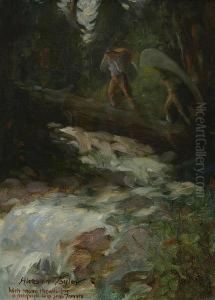Horace Taylor Paintings
Horace Taylor was a British artist and illustrator, born in 1881 in Scarborough, North Yorkshire, England. He is best known for his vibrant and modernist posters, especially those he created for the London Underground in the early 20th century. Taylor's work is characterized by bold colors, dynamic compositions, and a keen sense of design, reflecting the optimism and energy of the interwar period.
Before venturing into the world of commercial art, Taylor trained at the Scarborough School of Art. His early career was marked by a variety of artistic endeavors, including work as a scene painter for theaters and as an illustrator for magazines and newspapers. However, it was his transition to poster art that marked the height of his career and left a lasting impact on the field of graphic design.
In the 1920s, Taylor began working for the Underground Electric Railways Company of London, where he was commissioned to create a series of posters designed to encourage Londoners to use the underground for leisure activities. His posters often featured scenes of everyday life, infused with a sense of joy and elegance, thereby appealing to the aspirations of the urban middle class. Among his most famous works from this period is the 1924 poster "The Lure of the Underground," which depicts a crowd of fashionable Londoners being drawn towards a brightly lit underground station, symbolizing the allure of urban life.
Taylor's style was heavily influenced by the Art Deco movement, known for its emphasis on modernity and stylized forms. He combined this with a distinctly British sense of humor and a playful approach to typography, making his work stand out in the crowded world of advertising. Despite the commercial nature of his work, Taylor's posters are celebrated for their artistic quality and have been featured in numerous exhibitions devoted to the history of graphic design and the cultural history of London.
Throughout his career, Horace Taylor's work captured the spirit of his times, reflecting both the technological advancements and the changing social dynamics of the early 20th century. He continued to produce work until his death in 1934, leaving behind a legacy that continues to inspire designers and artists. Today, his posters are not only sought after by collectors but also serve as a vibrant reminder of the golden age of poster art.



